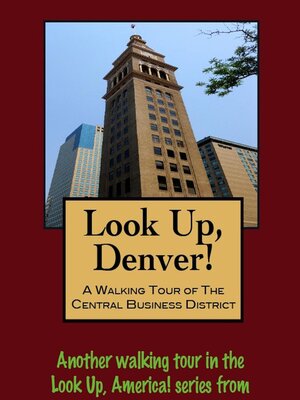
Sign up to save your library
With an OverDrive account, you can save your favorite libraries for at-a-glance information about availability. Find out more about OverDrive accounts.
Find this title in Libby, the library reading app by OverDrive.



Search for a digital library with this title
Title found at these libraries:
| Library Name | Distance |
|---|---|
| Loading... |
There is no better way to see America than on foot. And there is no better way to appreciate what you are looking at than with a walking tour. Whether you are preparing for a road trip or just out to look at your own town in a new way, a downloadable walking tour is ready to explore when you are.Each walking tour describes historical and architectural landmarks and provides pictures to help out when those pesky street addresses are missing. Every tour also includes a quick primer on identifying architectural styles seen on American streets.This area was the western frontier of the Kansas Territory in 1858 when William Larimer staked a claim to a square mile of hillside overlooking the confluence of the South Platte River and Cherry creek. Larimer had big plans for his unformed town and to help persuade the powers that be back in Eastern Kansas to pick his camp as the seat of Arapahoe County over the other existing mining camps he named it "Denver City" after Kansas Territorial Governor James W. Denver. Word had not filtered west from the capital of Lecompten, however, that Denver had already resigned his post and he would be dispensing no such favors.Denver City got underway nonetheless as a mining settlement, where prospectors could find supplies while they sifted the sands of Cherry Creek. There wasn't much gold but word of new strikes came along just often enough to keep the town viable while the United States Congress was hammering out the free Territory of Colorado in Washington. Denver City indeed became the Territorial Capital in 1865 but its future was far from assured. Fires and spring flooding plagued the settlement and then the Transcontinental Railroad not only passed the town by, it was routed 100 miles to the north through Cheyenne.Worried town leaders realized there was no time to waste if there was going to continue to be a Denver. A railroad to that main line was what was needed and the Denver Pacific was formed after a fund-raising campaign by the Board of Trade netted $300,000 in three days. it would not be enough but Denver businessmen kept the enterprise afloat until the first trains rolled down the tracks on June 24, 1870.The population of Denver at that time was 4,759. When the next census was taken in 1880 it was over 35,000. A silver strike in the Rocky Mountains in the 1870s brought more people and by the time the silver boom went bust in 1890 there were more than 100,000 people living in Denver. For most Americans there were two cities in the West - San Francisco and Denver.At the turn of the 20th Century, 16th Street was the town's main thoroughfare and was being compared favorably with Chicago's State Street. Major retailers lined up down the "city promenade" and invited some of the country's most celebrated architects to design their shopping palaces. After Union Station was constructed 17th Street attained similar prominence as a business and finance hub. So many banks congregated here that it became known as "The Wall Street of the Rockies."Our walking tour of Denver's Central Business District will cover both 16th and 17th streets and we will begin at a building that 100 years ago symbolized Denver's newly achieved status in the American West, the tallest building ever erected west of the Mississippi River when it appeared on the cityscape...







